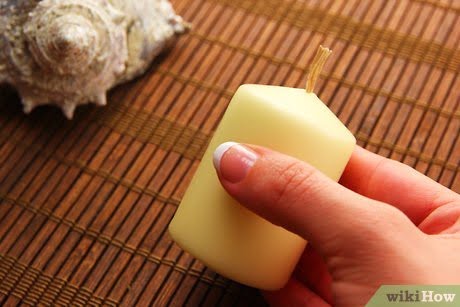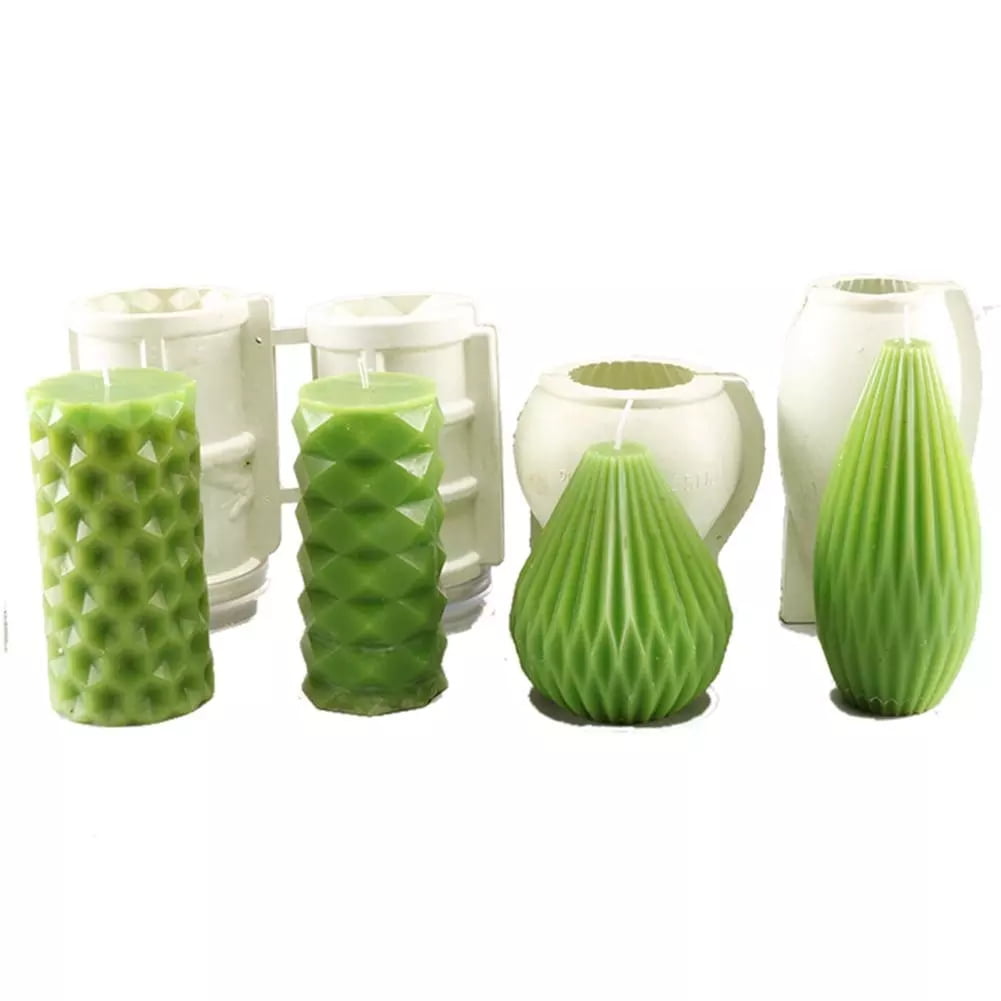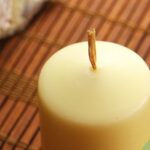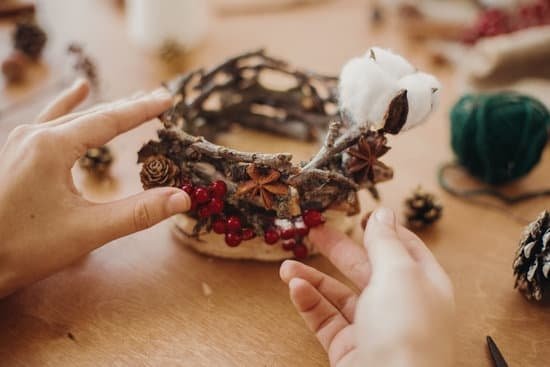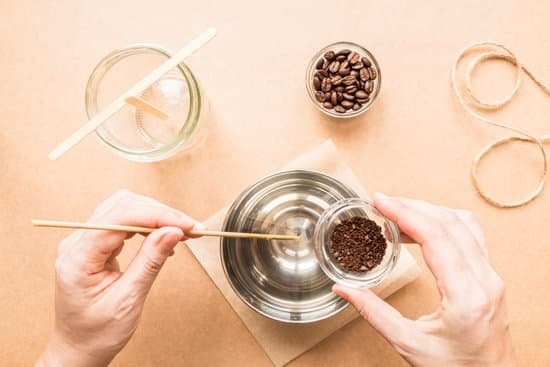Are you interested in the art of candle making and want to get started right at home? Creating your own candles can be a fulfilling and enjoyable hobby that allows you to customize scents, colors, and designs.
In this article, we will guide you through everything you need to know about starting your candle making journey, from understanding the basics to troubleshooting common challenges along the way. Whether you’re a beginner or seasoned DIYer, this comprehensive guide will provide you with the knowledge and resources needed to create beautiful homemade candles.
The popularity of homemade candles has been on the rise in recent years, with more people seeking natural alternatives to store-bought candles. Not only do homemade candles offer unique customization options, but they also provide various benefits. By making your own candles, you have control over the ingredients used, avoiding potentially harmful chemicals found in mass-produced candles. Additionally, crafting candles at home can be a relaxing and therapeutic experience that allows for self-expression and creativity.
Before diving into the world of candle making, it is important to prioritize safety. While candle making can be a fun activity, improper handling of materials and equipment can pose risks.
To ensure a safe candle making environment, there are essential equipment pieces you should invest in. These include heat-resistant containers for melting wax, a thermometer to monitor temperature accurately, a double boiler or melting pot for efficient wax heating, and a suitable work area free from clutter or flammable materials.
Now that we’ve covered the introduction let’s delve deeper into understanding the basics of candle making and explore why this craft is gaining popularity among DIY enthusiasts.
Understanding the Basics
The rising trend of homemade candles has taken the world by storm, with more and more people turning to candle making as a creative and fulfilling hobby. But what exactly is it about candle making that has captured the interest of so many? In this section, we will explore the reasons behind the popularity of candle making and why it might be the perfect hobby for you.
The Benefits of Creating Your Own Candles
There are several benefits to creating your own candles at home. First and foremost, making candles allows you to express your creativity and personal style. From choosing the wax type to selecting fragrances and decorations, every aspect of candle making can be tailored to your preferences. Homemade candles also make great personalized gifts for friends and family on special occasions.
Another advantage of candle making is the potential cost savings. Purchasing high-quality candles from stores can become quite expensive over time, especially if you enjoy burning candles regularly. By making your own candles, you have complete control over the ingredients used and can create long-lasting, high-quality candles at a fraction of the cost.
Additionally, candle making can be a therapeutic activity that helps reduce stress and promote relaxation. The process of melting wax, mixing fragrances, and pouring them into molds or containers can be meditative and calming. The warm glow of a handmade candle creates an inviting ambiance that enhances any space.
Joining a Thriving Community
Not only is candle making an enjoyable hobby on its own, but it also offers opportunities to connect with others who share your passion. There are numerous online forums, social media groups, and local workshops where you can exchange tips and ideas with fellow enthusiasts. Sharing experiences and learning from others in the candle making community can take your skills to new heights while fostering friendships along the way.
So whether you’re looking for a creative outlet or a way to save money on quality candles, or simply seeking a therapeutic activity, candle making can be the perfect choice for you. In the following sections, we will delve into the essential equipment needed to get started and explore different wax options that will set the foundation for your candle making journey.
Safety First
When it comes to candle making, safety should always be the top priority. Before starting your candle-making journey at home, it is crucial to have the essential equipment in place to ensure a safe and enjoyable experience. By investing in the right tools and following proper safety measures, you can minimize risks and create beautiful candles with peace of mind.
To begin with, it is important to have heat-resistant containers that can withstand the high temperatures involved in melting wax. Glass jars or metal containers are popular options as they provide stability and prevent any accidents caused by melting plastic. Additionally, a thermometer is vital for monitoring the temperature of the wax throughout the process. This ensures that the wax reaches its optimal melting point without overheating or burning.
Another essential item for candle making is a double boiler system. This consists of two pots-one larger pot filled with water and one smaller pot placed inside it-that allow for gentle and even heating of the wax. This setup helps prevent direct heat exposure, reducing the risk of fire and ensuring consistent temperature control.
Creating a suitable work area is equally important for safety during candle making. It is advisable to designate a specific space away from any flammable materials or open flames. Covering surfaces with newspapers or protective sheets makes cleaning up any spills easier while preventing damage to your work area.
In summary, when preparing to make candles at home, ensuring safety should be your first step. Remember to acquire heat-resistant containers, a thermometer, and a double boiler system before embarking on your candle-making journey. And don’t forget to set up a suitable work area free from potential fire hazards. By prioritizing safety and having the necessary equipment in place, you can enjoy creating candles worry-free.
Know Your Wax
An Overview of Candle Wax Options
When it comes to candle making, the type of wax you choose is crucial for achieving the desired burn time and scent throw. There are several options available, each with its own unique features and benefits. Here is an overview of some popular candle wax options:
– Soy Wax: Made from soybean oil, soy wax is a natural and renewable resource. It has gained popularity in recent years due to its clean-burning properties and excellent fragrance retention. Soy wax also has a lower melting point, which allows for longer-lasting candles.
– Beeswax: Beeswax is another natural option that provides a warm and golden hue to candles. It has a slow burn rate and emits a sweet, honey-like scent when lit. Beeswax candles are known for their air-purifying properties as they release negative ions that can help neutralize pollutants in the air.
– Paraffin Wax: Paraffin wax is a commonly used option in commercial candle production. It is derived from petroleum and offers an affordable choice for candle makers. Paraffin wax provides excellent fragrance saturation but may produce more soot compared to other types of waxes.
Weighing the Pros and Cons
Each type of wax has its own set of advantages and disadvantages. Consider your specific preferences and needs before selecting the right wax for your homemade candles.
- Soy wax is an eco-friendly option that supports sustainable farming practices, making it appealing to environmentally conscious individuals. However, it may have limitations in creating intricate designs or pillars due to its softer consistency.
- Beeswax is highly regarded for its natural properties but tends to be more expensive than other waxes. Its slow-burning characteristic makes it ideal for long-lasting candles but may not be suitable for those seeking quick results.
- Paraffin wax is widely available and cost-effective, making it an attractive choice for beginners or those on a budget. However, its petroleum-derived nature may deter individuals looking for more natural options.
Experimenting with Wax Blends
In addition to individual candle waxes, many candle makers also choose to blend different types of wax to harness the benefits of each. Experimenting with wax blends allows you to create custom candles that suit your preferences and requirements.
By combining soy wax and beeswax, for example, you can achieve a balance between eco-friendliness and longevity. Blending paraffin wax with other natural waxes can potentially minimize soot production while maintaining affordability.
Remember to test any wax blends before committing to large-scale candle production. Each blend may have differing melting points and burn rates, which can affect the overall performance of your candles. Keep notes on your experiments to replicate successful blends in the future.
Understanding the features and characteristics of different types of candle wax is essential before embarking on your candle making journey. Consider the pros and cons of each option, and don’t be afraid to experiment with blends that suit your preferences. By selecting the right wax for your homemade candles, you’ll be well on your way to creating beautifully scented and long-lasting creations.
Choosing the Right Wick and Fragrance
The Importance of Choosing the Right Wick Size
When it comes to candle making, selecting the appropriate wick size is crucial for achieving a successful burn. The size of the wick determines how quickly the wax will melt and how effectively it will release fragrance. Using a wick that is too big may result in excessive flame and a fast-burning candle, while a wick that is too small can lead to a weak flame and incomplete melting of the wax.
To determine the right wick size for your candles, consider factors such as the diameter of your candle container or mold and the type of wax being used. A general rule of thumb is to choose a wick that is slightly larger than what you initially think you need.
This allows for some trial and error to find the perfect fit. It’s also important to note that different types of wax may require different wick sizes due to variations in melting points and viscosity.
Exploring Fragrance Options
One of the joys of making your own candles is being able to personalize them with unique fragrances. There are countless fragrance options available, ranging from fruity and floral scents to cozy and comforting aromas. When choosing a fragrance for your candle, consider the mood or ambiance you want to create.
It’s essential to use fragrance oils specifically designed for candle making as they are formulated to blend well with different types of wax. Look for high-quality oils that are specifically tested for performance in candles. Keep in mind that certain scents may have stricter usage guidelines due to their potency, so be sure to follow any recommended safety precautions or maximum usage rates provided by manufacturers.
Combining Wick Selection with Fragrance Choices
Finding the perfect balance between choosing the right wick size and fragrance oil is key. In some cases, certain fragrances may require an adjustment in wick size due to their specific characteristics. For example, fragrances with higher oil content or a strong scent throw may benefit from using a larger wick to ensure proper burning and fragrance release.
Experimentation is often necessary to achieve the desired result. Don’t be afraid to test different combinations of wick sizes and fragrances until you find the perfect match for your candles. Keep detailed records of your experiments so you can replicate successful combinations in future batches.
By carefully selecting the right wick size and fragrance for your homemade candles, you can elevate the overall candle experience for yourself and those who enjoy your creations. The right combination will not only enhance the aesthetics of your candles but also provide a satisfying and enjoyable sensory experience when they are lit.
Essential Tools
When it comes to making candles at home, having the right tools is essential. The choice of mold, containers, and additives can greatly impact the final outcome of your candles. In this section, we will discuss the different options available and how they can enhance your candle-making experience.
Molds
One of the first decisions you’ll need to make is what kind of mold to use for your candles. There are various types to choose from depending on the shape and size you want to achieve.
- Metal molds: These are durable and long-lasting options that can withstand high temperatures. They come in a variety of shapes and sizes, making them versatile for different candle designs.
- Silicone molds: These have gained popularity due to their flexibility and ease of use. Silicone molds are great for intricate designs or unique shapes that may be difficult to achieve with other types of molds.
Containers
If you prefer container candles, there are numerous options available that can suit your style and preference. Here are a few common choices:
- Glass jars: These are popular for their sleek and modern look. Glass jars also allow for better heat distribution, resulting in a more even burn.
- Tin cans: These provide a rustic and vintage feel to your candles. Tin cans are often used for travel or outdoor candles due to their portability and durability.
Additives
To add extra flair to your candles, you may consider incorporating additives such as colorants or botanicals.
- Colorants: There are different types of colorants available like liquid dyes or color chips that can be mixed into the wax before pouring. Experimenting with different colors can help create visually appealing candles.
- Botanicals: Adding dried flowers, herbs, or spices to your candle wax can not only enhance their appearance but also provide natural scents when burned. Popular choices include lavender buds, rose petals, or cinnamon sticks.
In summary, having the right tools is crucial for successful candle making at home. The choice of molds, containers, and additives allows for creativity and personalization. Whether you prefer traditional or unique designs, exploring these options will help you create candles that speak to your individual style and preference.
Essential Tools Table
| Type | Description |
|---|---|
| Molds | – Metal molds: Durable and versatile options that can withstand high temperatures.
|
| Containers | – Glass jars: Sleek and modern option with better heat distribution.
|
| Additives | – Colorants: Liquid dyes or color chips that add visual appeal.
|
Step-by-Step Candle Making Process
The candle making process involves several steps that are essential for creating a beautiful and functional homemade candle. By following these step-by-step instructions, you can successfully make candles at home:
1. Prepare Your Work Area:
Before you start making candles, it is important to set up a clean and organized work area. Lay down newspaper or a protective covering on your workspace to catch any spills or drips. Make sure you have all the necessary equipment and materials within reach.
2. Melting the Wax:
Begin by melting your chosen wax in a double boiler or a heat-resistant container placed in a pot of boiling water. Heat the wax slowly and stir occasionally to ensure even melting. Use a thermometer to monitor the temperature; each type of wax has its own specific melting point.
3. Adding Fragrance and Color:
Once the wax has melted completely, it is time to add fragrance and color to your candle. Stir in the desired amount of fragrance oil or essential oil, following the manufacturer’s recommended guidelines for proper scent throw. If you want to add color, mix in dye chips or liquid colorants until you achieve your desired shade.
4. Preparing the Mold/Container:
While your fragranced and colored wax is still melted, prepare your mold or container by securing the wick in place using a wick holder or by dipping it into melted wax and sticking it onto the bottom center of the mold/container. Ensure that the wick is straight and centered.
5. Pouring the Wax:
Carefully pour the melted wax into your prepared mold or container, ensuring that it does not overflow. Leave some space at the top for any potential shrinkage during cooling. Hold onto the wick as you pour to prevent it from moving out of place.
6Allowing Time for Cooling:
After pouring, allow your candle to cool undisturbed at room temperature for several hours or overnight until it solidifies completely. Avoid moving or touching the candle during this cooling period to prevent any imperfections.
By following these step-by-step instructions, you can successfully create your own candles at home. Remember to always prioritize safety, adhere to the recommended guidelines for each material and equipment, and have fun experimenting with fragrances, colors, and different mold options. Making candles can be an enjoyable and rewarding craft that allows you to personalize your space with unique scents and designs.
Troubleshooting and Tips
Candle making, like any craft, comes with its own set of challenges. However, with a little troubleshooting and some helpful tips, you can overcome common issues that may arise during the candle making process. Here are some tips and recommendations to ensure a successful candle making experience:
- Tunneling: One common issue faced by candle makers is tunneling, which occurs when the wax burns down the center of the candle, leaving wax residue on the sides. To prevent tunneling, it is important to ensure that your wick is properly sized for the diameter of your container or mold.
A wick that is too small can lead to tunneling. Consider using a wick guide or consult a wick manufacturer’s guidelines to determine the appropriate size. - Uneven Burns: If you notice that your candle is burning unevenly with wax pooling on one side, there are a few steps you can take to correct this issue. First, remember to trim your wick before each burn to approximately 1/4 inch.
This will help maintain a stable flame and promote an even burn. Additionally, make sure the candle is placed in an area where it won’t be exposed to drafts or airflow, as this can contribute to uneven burning. - Fragrance Fading: Over time, you may find that the scent of your candles becomes less potent. To avoid fragrance fading, consider adding fragrance oils at the recommended temperature provided by the manufacturer. Adding fragrance oils at higher temperatures can sometimes cause them to evaporate more quickly and result in a weaker scent throw. It’s also important to use high-quality fragrance oils specifically formulated for candles.
- Blooming or Frosting: Blooming or frosting refers to the white crystalline layer that may appear on the surface of soy wax candles over time. While this does not affect the quality or burn of the candle, some may find it undesirable from an aesthetic standpoint.
To minimize blooming or frosting, try using a soy wax specifically formulated to reduce this effect. Alternatively, some candle makers choose to view it as a characteristic of soy wax and embrace the natural look. - Proper Cooling: Allowing your candles to cool properly is essential to avoid potential issues such as uneven surfaces or sinkholes. Once you have poured the melted wax into your mold or container, it is important to resist the temptation to move or disturb the candles until they have completely cooled and solidified. This will ensure a smooth and even finish.
By following these troubleshooting tips, you can overcome common challenges in candle making and create beautiful and functional candles at home. Remember that practice makes perfect, so don’t be discouraged if you encounter difficulties along the way. With patience and persistence, you will become more skilled and confident in your candle making abilities.
Safety Concerns and Proper Storage
Candle making is a creative and enjoyable hobby that can bring a sense of relaxation and satisfaction. However, it is essential to prioritize safety throughout the process to avoid any potential hazards. In this section, we will discuss important safety concerns when making candles at home and provide tips for proper storage to ensure the longevity and quality of your homemade candles.
Safety Concerns: Protecting Yourself and Your Home
When engaging in candle making, it is crucial to create a safe working environment. Here are some safety measures you should consider:
- Suitable Work Area: Choose a well-ventilated space with a flat, stable surface away from flammable objects or materials.
- Heat-Resistant Containers: Always use heat-resistant containers made explicitly for candle making. Glass or metal containers are ideal options.
- Thermometer: A thermometer is necessary to monitor the temperature of the wax accurately. Avoid overheating the wax as it may lead to fires or burns.
- Double Boiler: Use a double boiler system to melt the wax instead of directly heating it on a stove or in a microwave. This helps prevent accidental fires caused by direct heat exposure.
- Protective Gear: Wear protective gear such as gloves and safety goggles when handling hot wax or pouring it into containers.
Proper Storage: Preserving Quality and Safety
To maintain the quality and longevity of your homemade candles, proper storage is essential. Follow these guidelines:
- Cool and Dry Place: Store your candles in a cool area away from direct sunlight or sources of heat as high temperatures can cause melting or warping.
- Away from Drafts: Keep your candles away from areas with drafts, such as open windows or fans, as this can result in uneven burning or flickering flames.
- Ideal Temperature Range: Aim for an ambient temperature between 60°F-75°F (15°C-24°C) for optimal candle storage.
- Separate Containers: If storing multiple candles, ensure they are not touching to prevent color transfer or damage.
- Secure and Dust-Free: Keep your candles in airtight containers or wrap them in plastic bags to prevent dust from collecting on the surface.
By following these safety concerns and proper storage practices, you can enjoy your homemade candles safely while preserving their aesthetics and performance. By taking care of your candles, you can use them for an extended period and ensure each burn is as safe as the first. Next, we will explore how to add a creative touch to your candle making journey by experimenting with decorations and packaging.
Getting Creative
One of the most exciting aspects of making candles at home is the opportunity to get creative with candle decorations and packaging. Not only does this allow you to personalize your homemade candles, but it also adds a special touch when gifting them to others. In this section, we will explore some ideas for decorating your candles and creating unique packaging.
When it comes to candle decorations, there are countless possibilities. You can add ribbons or lace around the container or mold to enhance its aesthetic appeal. Alternatively, you can use decorative adhesive labels or decals that reflect your personal style or the theme of the occasion.
For a more natural look, consider tying some natural elements such as dried flowers, herbs, or twigs around the candle. This adds a touch of elegance and brings the beauty of nature into your creations.
In addition to candle decorations, packaging plays a crucial role in presenting your homemade candles. This is especially important if you plan on giving them as gifts or selling them. Simple mason jars or tin containers are popular choices that give a rustic and charming feel to the candles. You can further enhance their presentation by attaching custom labels with personalized messages or adding bows and tags that match the color scheme of the candle.
Experimenting with different candle decorations and packaging ideas allows you to fully express your creativity and make your homemade candles stand out. It also gives you an opportunity to create a cohesive brand if you plan on making candles for sale. Remember to have fun during this process and let your imagination guide you in creating beautiful and visually appealing homemade candles.
| Decoration Ideas | Packaging Ideas |
|---|---|
| Ribbons or lace | Mason jars |
| Decorative adhesive labels/decals | Tin containers |
| Natural elements (flowers, herbs, twigs) | Custom labels with personalized messages |
Conclusion
In conclusion, embarking on a candle making journey at home can be a fulfilling and rewarding experience. By understanding the basics of why candle making has become such a popular trend, you can take advantage of the benefits that come with creating your own candles. Remember to prioritize safety by investing in essential equipment such as heat-resistant containers, thermometers, and suitable work areas to ensure a safe working environment.
Knowing your wax options is crucial in achieving desired results. Take the time to explore different types of wax like soy wax, beeswax, and paraffin wax, and weigh their pros and cons before making a decision. Additionally, choosing the right wick size and fragrance allows you to personalize your candles and enhance the overall candle experience.
When it comes to tools, molds offer the opportunity for unique candle shapes while containers like jars or tins provide practicality. You may also want to experiment with additives such as colorants and botanicals for added creative expression. Following a step-by-step candle making process will guide you through melting the wax, adding fragrance and color, pouring into molds or containers, and allowing proper cooling time.
Remember that troubleshooting common challenges may arise along the way but don’t let this discourage you. Tunneling, uneven burns, or fragrance fading can often be overcome with various tips and recommendations provided. Additionally, proper maintenance, storage, and handling should be practiced to ensure safety and extend the lifespan of your homemade candles.
Finally, let your creativity shine by experimenting with candle decorations and packaging ideas. Whether it’s adding ribbons or labels or exploring custom packaging concepts; make your homemade candles visually appealing and gift-worthy. With all these aspects considered in our article outline remember – now is the perfect time to start your candle making journey at home. Enjoy the satisfaction of producing your own candles while providing yourself with relaxation and ambiance all year round.
Frequently Asked Questions
What materials do you need to start a candle business?
To start a candle business, you will need several materials. First and foremost, you will require wax, which is the main ingredient for making candles. Different types of wax can be used such as soy wax, beeswax, or paraffin wax, depending on your preferences and target market. Additionally, you will need wicks, which are essential for burning the candles.
Wicks come in various sizes and materials like cotton or wooden wicks. Furthermore, you will need containers or molds to shape the candles and hold the melted wax. Other materials required include fragrance oils or essential oils for scented candles, dyes or colorants for adding colors to the wax, a thermometer for monitoring the temperature during the candle-making process, and basic tools like a melting pot, pouring pitcher, and stirring utensils.
What do you need to start a candle?
Starting a candle generally requires a few key items. The essential component is obviously wax since it serves as the base material for candles. As mentioned earlier, different types of wax can be used depending on personal preference and customer demands. The next crucial element is the wick that ignites and burns the candle.
Choosing an appropriate wick size depends on factors such as candle diameter and type of wax used. Additionally, fragrance oils or essential oils can be added to create scented candles enticing customers with pleasant aromas when burned. Containers or molds are necessary to hold the melted wax, giving shape to the candle during cooling and solidification processes. Lastly, other optional but helpful tools include thermometers for temperature monitoring during melting and pouring processes.
Is selling homemade candles profitable?
Selling homemade candles has the potential to be profitable if approached strategically and with careful attention to quality craftsmanship and marketing efforts. The profitability hinges on various factors such as production costs, pricing strategy, marketing channels utilized, consumer demand for unique handmade products in the candle industry market segment within your geographical area or online platform exposure reach among others.

Welcome to my candle making blog! In this blog, I will be sharing my tips and tricks for making candles. I will also be sharing some of my favorite recipes.

